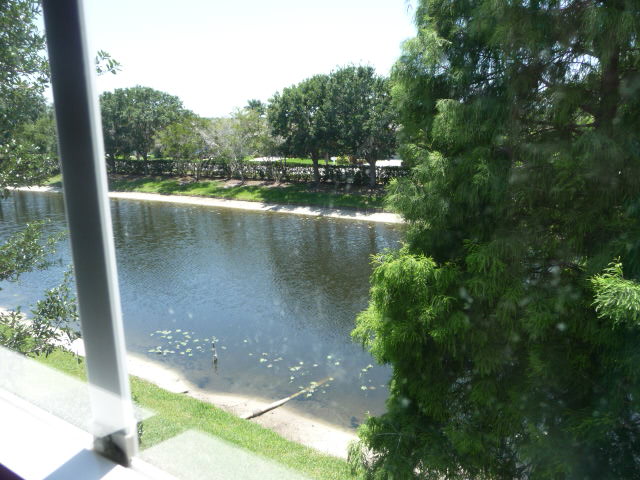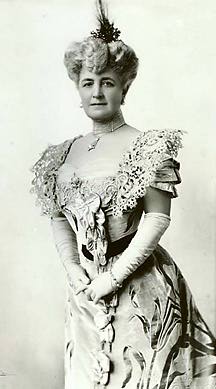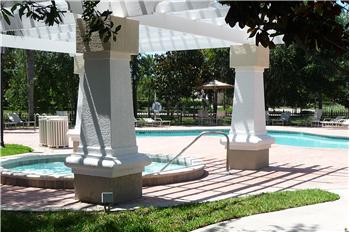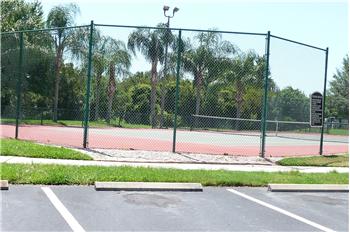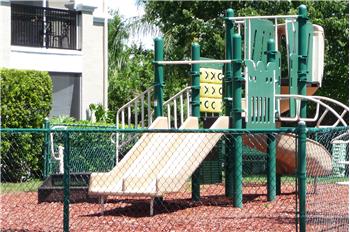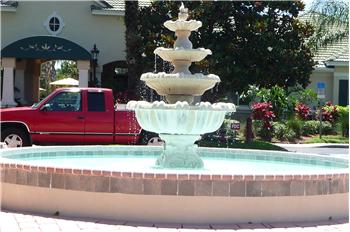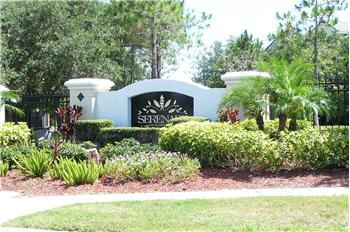  |
$126,000
Single Family Home 3 Bedrooms 2 Full Bathrooms 212 Units Interior: 1,376 sqft Year Built: 2004 MLS #: M5829316
|
5160 Northridge Rd Bldg 9, Unit 212
|
Presented by Patricia Baker |
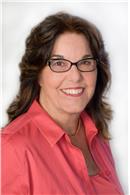
|
Neighborhood InfoThe village of Sarasota was incorporated for local government as a town under state guidelines in 1902 with John Hamilton Gillespie as mayor. It was re-platted in 1912 and its government then was incorporated as a city in 1913, with A. B. Edwards as mayor.
Owen Burns
Owen Burns had come to Sarasota for its famed fishing and remained for the rest of his life.[1] Not only did he become the largest landowner in the city, but he founded a bank, promoted the development of other businesses, and built its bridges, landmark buildings, and mansions. He dredged the harbor and created new bay front points with reclaimed soils. He created novel developments such as Burns Court to attract tourists and built commercial establishments to generate additional impetus to the growing community. He also went into a business partnership with John Ringling to develop the barrier islands, a fateful decision that bankrupted him when his partner failed to live up to commitments on development agreements. In 1925 Burns built the El Vernona Hotel, naming it after his wife, Vernona Hill Freeman Burns. Shortly after the opening of the hotel, the land boom crash in Florida struck a fatal blow to his finances because of the unfulfilled partnership agreement. Ironically, it was the same former partner, John Ringling, who took advantage of the situation and purchased the hotel for a portion of its value, although several years later, with the crash of the stock market, Ringling would meet the same financial fate. Beside the landmarks, bridges, and developments he built, Burns contributed to the attraction of many around the country to Sarasota. Among his five children, he also raised the most important historian for the community, his daughter, Lillian G. Burns. Bertha PalmerBertha Palmer (Bertha Honoré Palmer) was the region's largest landholder, rancher, and developer after the turn of the 20th century, where she purchased more than 90,000 acres (360 km2) of property.[15] She was attracted to Sarasota by an advertisement placed in a Chicago newspaper by A. B. Edwards. They would maintain a business relationship for the rest of her life. The Palmer National Bank, established on Main Street at Five Points, remained a strong bank led by her sons through the depression and merged with Southeast Bank in 1976.[16] Bertha Palmer also owned a large tract of land that now is Myakka State Park. During this period this land was operated as a ranch. She developed and promoted many innovative practices that enabled the raising of cattle to become a large-scale reality in Florida. At her "Meadowsweet Farms", Palmer also pioneered large-scale farming and dairy in the area and made significant contributions to practices that enabled the development of crops that could be shipped to markets in other parts of the country. Her experimentation was coordinated with the state department of agriculture. As war in Europe threatened, Bertha Palmer touted the beauty of Sarasota and its advantages to replace the typical foreign destinations of her social peers. Palmer made her winter residence on the land which the Webb family had homesteaded. She built a resort that would appeal to these new visitors to the area. She quickly established Sarasota as a fashionable location for winter retreats of the wealthy and as a vacation destination for tourists, which endured beyond the war years and blossomed for the new wealth that developed more broadly in the United States during the 1920s and, after the Second World War as well.[17] In her early publicity, Palmer compared the beauty of Sarasota Bay to the Bay of Naples, and also touted its sports fishing. As the century advanced, the bounty of the bay continued to attract visitors, until overfishing depleted its marine life. Palmer retained most of the original Webb Family structures and greatly expanded the settlement. The pioneer site has been listed on the National Register of Historic Places as Historic Spanish Point and is open to the public for a fee. Her tourist accommodations at The Oaks have not been preserved, however. Also arriving in 1910, Owen Burns closely followed Bertha Palmer to Sarasota and with two purchases, he quickly became the largest landholder within what now is the city, therefore many of the huge Sarasota properties she owned are in what now is Sarasota County (which did not exist during her lifetime). Many of its roads bear the names she put on the trails she established. She did participate, however, in speculation in the city along with others, purchasing undeveloped land in great quantities, and many parcels bear her name or that of her sons among those in abstracts. Her sons continued her enterprises and remained as investors and donors in Sarasota after the death of Bertha Palmer in 1918. Aside from drawing worldwide attention to the city as a vacation destination and a chic location for winter residences, as well as being renowned for the ranching and agricultural reforms she introduced, two state parks are located on properties she held, portions of the Oscar Scherer State Park and the enormous Myakka River State Park, that may be counted as her greatest tangible legacy to Sarasotans. Other developments and early historyOther communities in the area were incorporated or began to grow into towns that were quite distinct from the bay front community whose plat ended at what is now Tenth Street. They have been absorbed as Sarasota grew, but some have retained their names and are recognized today as neighborhoods. Some communities, such as Overtown, Bay Haven, Indian Beach, Shell Beach, Bee Ridge, and Fruitville have all but faded from the memory of most living there now. Overtown expanded to include what now is designated as the historic Rosemary District and the boundaries of Newtown now merge with that. The Ringling College of Art and Design includes for its administration building, a hotel developed for the community of Bay Haven when Old Bradenton Road was the main thoroughfare north to the Manatee River. That route avoided having to cross the broadest portion of Bowless Creek. Tamiami Trail was developed in the mid-1920s and a bridge across the creek eliminated it as a natural barrier limiting development. Shell Beach became the location where the grand estates would be built on the highest land along the bay as well as where the Sapphire Shores and The Uplands developments are today. Women have played a significant role in the development of Sarasota, perhaps not so contrary to many communities, but the history of Sarasota has documented their roles very publicly. Bertha Palmer was not so unusual here, Many other examples may be found by exploring the county records at the Sarasota County History Center. An area in northern Sarasota attracted many of the Ringling brothers, who had created their wealth as circus magnates, at the turn of the century. The Ringling Brothers Circus had not yet consolidated as a single entity. First, the Alf T. Ringling family settled in the Whitfield Estates area with extensive land holdings. The families of Charles and John Ringling followed, living farther to the south. Soon, children and members of the extended family increased the presence of the Ringling family in Sarasota. Ringling Brothers Circus established its winter home in Sarasota during 1919 following the death of Alf T., when Charles Ringling assumed many of his duties. Charles Thompson had joined the staff of the Ringling Brothers Circus when it began to purchase smaller or failing circuses, and to operate them separately. In 1919, these holdings were consolidated into one huge circus, billed as "the greatest show on Earth". Only two of the original five founding brothers now survived, but other members of their families continued to participate in the business or serve on its board of directors. Performers and staff members began to settle in Sarasota, and established the Ringling Circus as part of the Sarasota community. Following the end of World War I, an economic boom began in Sarasota. The city was flooded with new people seeking jobs, investment, and the chic social milieu that had been created by earlier developers. 
Cà d'Zan, Mable and John Ringling 1925 Sarasota residence, now listed on the National Register of Historic Places - architect Dwight James Baum, built by Owen Burns
Charles Ringling as developerCharles Ringling invested in land, developed property, and founded a bank. He participated in Sarasota's civic life and gave advice to other entrepreneurs starting new businesses in Sarasota. From his bank, he loaned money to fledgling businesses. Encouraging its creation, he donated land to the newly formed county—upon which he also built its government offices and courthouse as a gift to the community. Ringling Boulevard was named for Charles Ringling. It is a winding road leading east from the bay front at what now is Tamiami Trail toward the winter circus headquarters. It crosses Washington Boulevard where Charles Ringling built the Sarasota Terrace Hotel, a high-rise in the Chicago style of architecture, opposite the site which Ringling would donate for the county seat. It was readily accessible by train at the time. Charles Ringling and his wife, Edith, began building their bay front winter retreat in the early 1920s. Charles Ringling died in 1926, just after it was completed. For decades Edith Ringling remained there and continued her role in the administration of the circus, assuming many duties of her husband, and her cultural activities in the community. Her daughter, Hester, and her sons were active in Sarasota's theatrical and musical venues. What came to be known internationally as the Edith Ringling Estate is now the center of the campus of New College of Florida.[18][19] John Ringling in partnership with Owen BurnsJohn Ringling invested heavily in developments on the barrier islands, known as keys, which separate the shallow bay from the Gulf of Mexico. Although he had several corporations and development projects in Sarasota, he worked in partnership with Owen Burns to develop the keys through a corporation named, Ringling Isles Estates. Burns owned all of Lido Key. To facilitate development of these holdings a bridge was built to the islands by his partner, Owen Burns. Eventually Ringling donated the bridge to the city for the government to maintain. They named that route, John Ringling Boulevard. The center of Saint Armand key contains Harding Circle and the streets surrounding it are named for other U.S. presidents. Dredge and fill by Owen Burns created even more dry land to develop, including Golden Gate Point. Winter residents, called snowbirds, flocked to purchase these seasonal homes marketed to the well-to-do. Leading edge of the 1920s crashThe Roaring Twenties ended early for Sarasota. Florida was the first area in the United States to be affected by the financial problems that led to the Great Depression. In 1926 development speculation began to collapse with bank failures on the eastern coast of Florida, much earlier than most parts of the country. The financial difficulties spread throughout Florida. John Ringling initially profited from the economic crash. Ringling had put his partner, Owen Burns, into bankruptcy by using money from the treasury of their corporation for use on another Ringling project that was failing. He later purchased the landmark El Vernona Hotel from Burns at a fraction of its worth. John Ringling, too, however, lost most of his fortune. Shortly after the June 1929 death of his wife, Mable, his reversal began because his stock investments were affected. Just before the market crashed, Ringling had purchased several other circuses with hopes of combining them with the existing circus and selling shares on the stock exchange. The crash ended that plan. While Ringling continued to invest in expensive artwork, he left grand projects unfinished, such as a Ritz hotel on one of the barrier islands. He abandoned plans for an art school as an adjunct to the museum. Ringling did lend his name to an art school established by others in Sarasota, however reluctantly. The board of the circus, which included Edith Ringling and other members of the family, removed John Ringling and placed another director, Samuel Gumpertz, in charge of the corporation. By the time of his death in 1936, John Ringling was close to bankruptcy. His estate was saved only because he had willed it, together with his art collection, to the state and he died just before he would have become bankrupt. A film about the estate that is shown to museum visitors, states that his bank balance was less than four hundred dollars when he died. His nephew, John Ringling North, struggled for years to keep that legacy intact. [edit] A new city planIn 1925 John Nolen, a professional planner, was hired to develop a plan for the downtown of the city. He laid out the streets to follow the arch of the bay front with a grid beyond, that extended north to what is now Tenth Street and south to Mound. This followed more closely the way the city was developing at the time.
Twenty-first centuryAnother speculation crashThe boom of the 1950s failed to end in a crash, but almost a hundred years after the first speculation crash that affected her so badly in the mid-1920s, [2] Sarasota became identified as the epicenter of the 2008 real estate crash. [3] [4] It followed financial credit problems that began with poorly financed mortgages failing because of massive real estate speculation that began in the late 1990s and escalated dramatically during the early 2000s. [5] Once the values of the properties began to fall the mortgages purchased with consideration of "equity value" derived from the rapid increases in property values due to speculation, became problematic. The properties were no longer worth the value of the mortgages, some by great differences. The rate of foreclosures is increasing as the values remain low and governments are losing taxes to support services because of the decline in values. This became almost a nation-wide problem and occurred in other countries as well. Although not over yet, it is likely to be labeled as another boom period-crash, not in undeveloped land and not just in Florida, but this time it began with equity-based home mortgages and has led to a major financial crisis. geography and climateAccording to the United States Census Bureau, the city has a total area of 25.9 square miles (67 km2), of which 14.9 square miles ( 38.6 km²) is land and 11.0 square miles (28 km2) is water. Sarasota has a humid subtropical climate, with hot summers, mild winters, and high humidity year-round. There are distinct rainy and dry seasons in Sarasota, with the rainy season lasting from June to September, and the dry season from October to May. |
